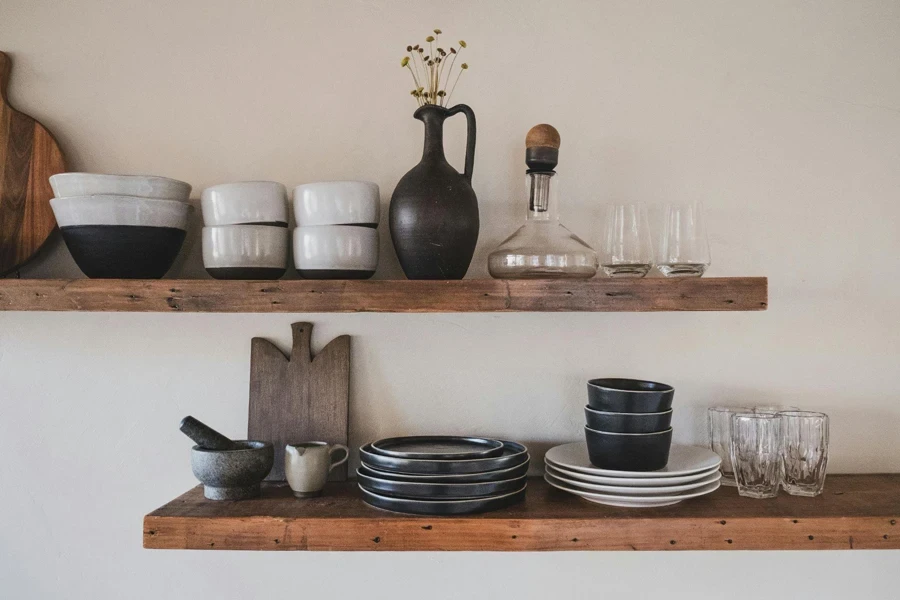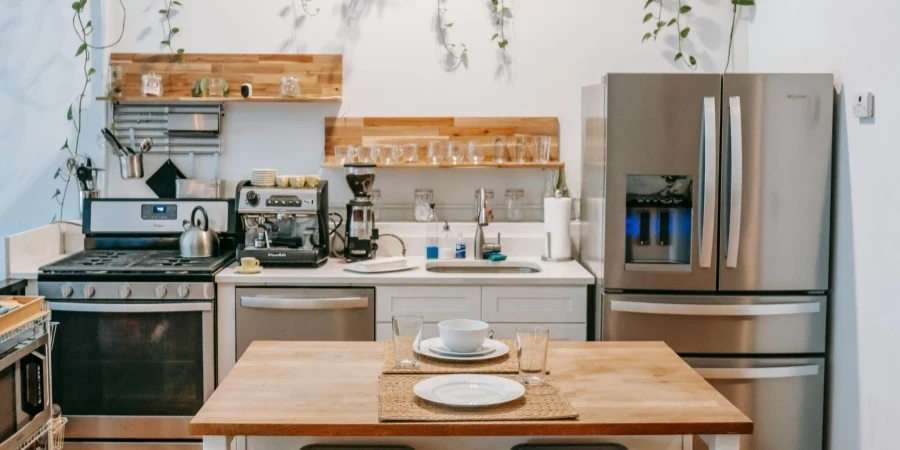The kitchen is no longer just a utilitarian space for meal prep—it has evolved into the emotional and functional nucleus of the modern home. As we approach Autumn/Winter 2025-26, a seismic shift is underway, driven by consumers demanding spaces that harmonize industrial grit, nostalgic warmth, and toxin-free living. Let’s unpack the key movements reshaping this domain, supported by cutting-edge innovations and cultural undercurrents.
Table of Contents
Industrial Brutalism Meets Heritage Craftsmanship
Modularity: The Antidote to Urban Claustrophobia
The Silent Revolution: Health-Centric Material Science
The Paradox of Plastic: Affordability vs. Sustainability
Textiles: Storytelling Through Threads
The Future Kitchen: A Blueprint for Brands
Conclusion: The Kitchen as a Living Organism
Industrial Brutalism Meets Heritage Craftsmanship
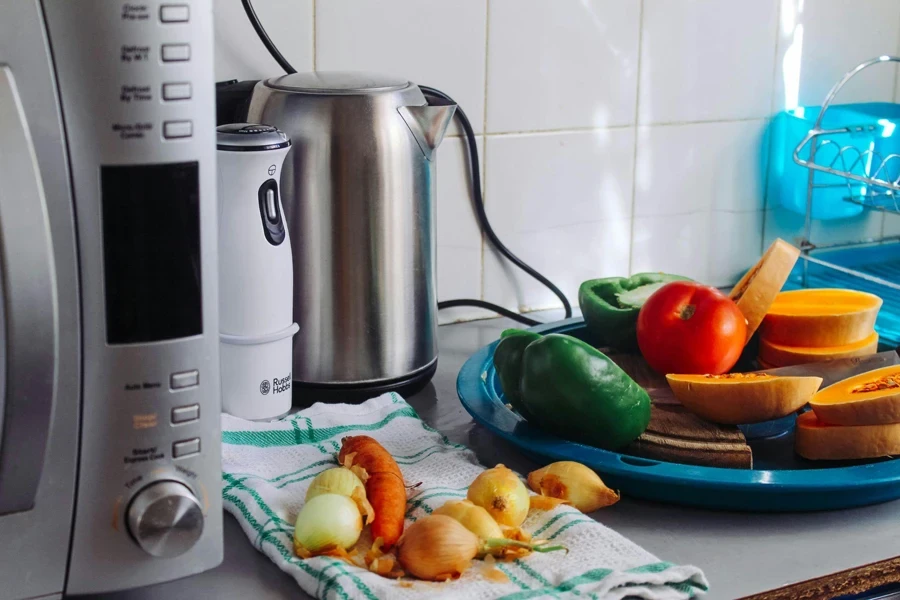
The raw allure of factory-inspired design is colliding with artisanal traditions, creating kitchens that feel both timeless and defiantly modern. Brands like Kohler and Delta Faucet are leading this charge with faucets featuring geometric silhouettes (think hexagonal spouts) paired with patina-finished brass handles. For instance, Kohler’s Artifacts Collection saw a 34% sales spike in 2024 after introducing oxidized bronze finishes mimicking century-old plumbing fixtures.
Meanwhile, cabinetry hardware is embracing a “well-loved” aesthetic. Semihandmade’s collaboration with The Home Depot features drawer pulls cast from reclaimed shipyard metals, each piece stamped with unique corrosion patterns. This trend taps into a broader cultural nostalgia; Pinterest reported a 120% surge in searches for “vintage industrial kitchens” following the success of TV series like The Bear, which romanticizes gritty culinary workspaces.
Modularity: The Antidote to Urban Claustrophobia
As urban dwellings shrink, modular solutions are transitioning from niche to necessity. OXO’s Stack & Store containers—nestable boxes with interchangeable dividers—achieved a 22% revenue jump in Q3 2024, reflecting demand for space optimization. Similarly, start-up Modular Pantry Co. offers magnetic spice jars that snap onto steel backsplashes, eliminating countertop clutter.
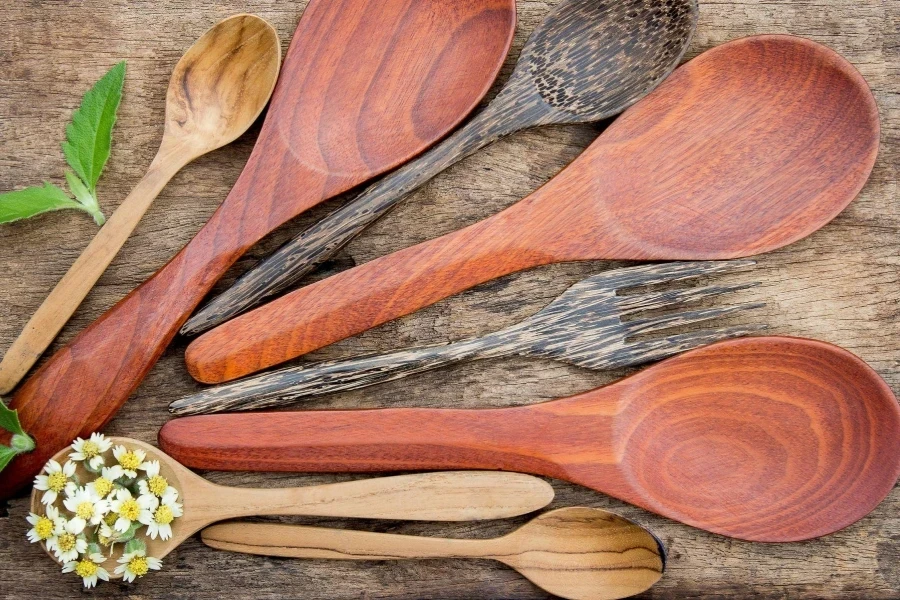
The true game-changer, however, lies in adaptive appliances. GE Appliances debuted a SmartDrawer Oven in early 2025, featuring removable compartments that double as serving trays or baking stones. Early adopters praise its ability to host “micro-cooking” sessions—think reheating soup while roasting vegetables—a nod to Gen Z’s preference for multitasking meals.
The Silent Revolution: Health-Centric Material Science
Beneath the surface, a quiet battle against toxins is redefining kitchenware. GreenPan’s CeramicTek™ frying pans, which use diamond-infused coatings to eliminate PFAS chemicals, now dominate 18% of the non-stick market. Their 2025 campaign, “Fry Without a Lie,” directly targets Millennial parents, emphasizing third-party certifications like EPA Safer Choice.
Silicon’s rise is equally telling. Once relegated to baking mats, food-grade silicone now stars in premium utensils. GIR disrupted the sector with its Spatula Pro, a heat-resistant tool molded in Pantone’s 2025 Color of the Year, Custard Cream. The design—featuring a fluted handle for grip—reduced wrist strain by 40% in clinical trials, appealing to arthritis-prone Boomers.
Even storage is getting a detox makeover. Stasher’s silicone bags now outsell Ziploc in Whole Foods, while Zwilling’s Fresh & Save vacuum containers use plant-based polymers to extend produce shelf life by 72 hours—a statistic that convinced 68% of eco-conscious buyers in a Nielsen survey.
The Paradox of Plastic: Affordability vs. Sustainability
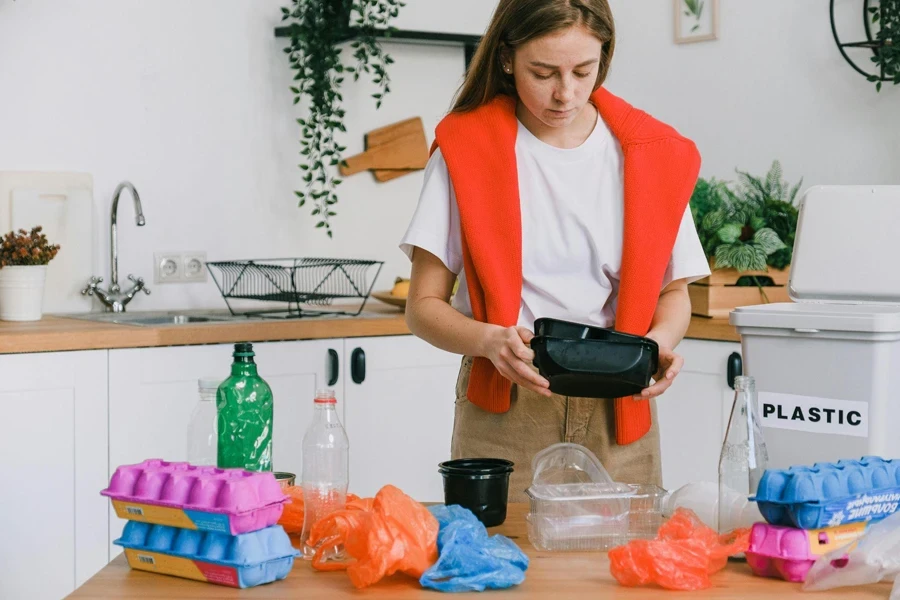
While sustainability remains aspirational, inflation has forced pragmatic compromises. Rubbermaid’s Brilliance food containers, made from 30% recycled plastic, saw a 15% sales drop in 2024 as shoppers reverted to cheaper virgin-plastic alternatives. This tension is starkly visible in emerging markets: India’s Tupperware sales grew 9% last year, driven by budget-focused families prioritizing airtight seals over eco-credentials.
Yet, innovators are bridging this gap. Muji’s PP Storage Series combines recycled polypropylene with minimalist aesthetics, priced just 12% above conventional options. Its success in Europe (41% YoY growth) hints at a viable blueprint: sustainability without sermonizing.
Textiles: Storytelling Through Threads
Kitchen linens have morphed into narrative canvases. Williams Sonoma’s Winter Folk tea towels, embroidered with Scandinavian gnomes foraging mushrooms, sold out within 72 hours of their 2024 holiday launch. The collection leveraged TikTok’s #Cottagecore hashtag (18.2B views) to target Gen Z’s longing for whimsical nostalgia.
Luxury fibers are also infiltrating this humble category. Buffy’s linen-cotton blend aprons, dyed with organic indigo, retail for $195—yet achieved a 300% ROI via influencer partnerships with chefs like Salt Bae. The message is clear: even dishrags are now status symbols.
The Future Kitchen: A Blueprint for Brands
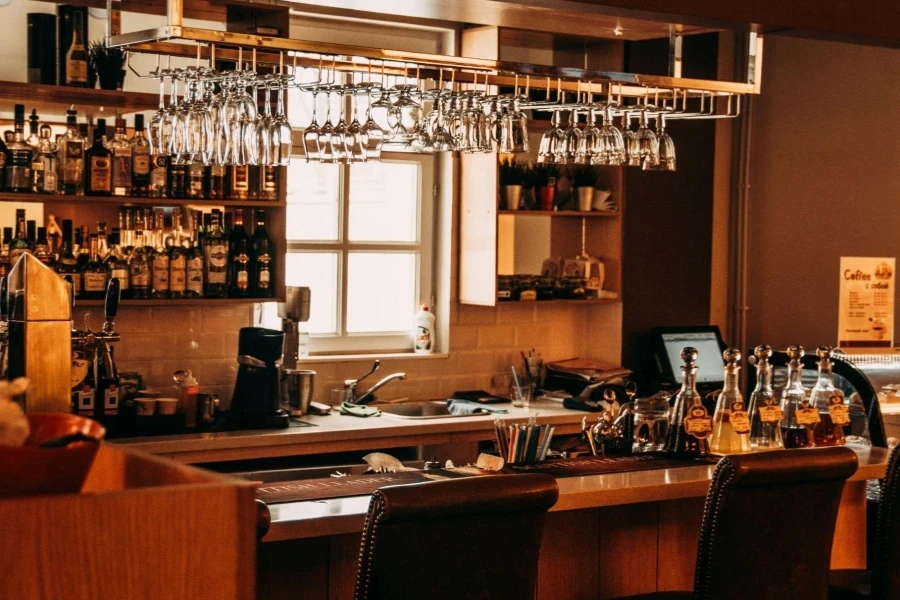
- Hybrid Surfaces: Countertops that merge functionality (integrated charging pads) with artistry (terrazzo made from construction debris).
- AI-Powered Pantries: Smart shelves like Samsung’s Visionary Pantry, which scan expiration dates and auto-generate recipes.
- Circular Systems: Brands like IKEA piloting Kitchen Leasing Programs, where customers rent modular units for easy upgrades.
Conclusion: The Kitchen as a Living Organism
The A/W 25/26 kitchen isn’t a static space—it’s a dynamic ecosystem adapting to our evolving needs. From toxin-free silicone whisks whispering promises of longevity, to faucets that double as sculptural centerpieces, every element now serves dual purposes: functional utility and emotional resonance. As designer Ilse Crawford notes, “The kitchen is where we choreograph our daily rituals. Its design must honor both the poetry and practicality of that dance.”
For brands, the mandate is clear: Innovate with empathy. Those who fail to blend aesthetics, ethics, and adaptability risk being left behind in the steam of progress.
